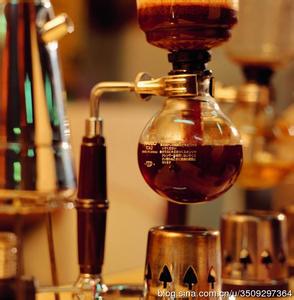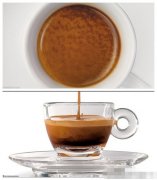Matters needing attention in siphon pot brewing coffee

1. Dry the next bottle, no water droplets.
two。 When you pull out the upper seat, tilt to the right and pull it straight up. Do not break it.
3. The spring under the middle filter should be tightened, the hook should be hooked, and pulled to the center.
4. Plug it down when you plug it into the seat.
5. Pay attention to water quality: pure water, purified water, magnetized water, distilled water, do not use mineral water
6. The temperature is between 80 and 90 degrees Celsius.
7. Punch time: all 50-60 seconds (do not exceed the time too long)
8. Coffee beans should be fresh, do not get damp or keep for too long
9. Coffee is best brewed and brewed.
10. Pay attention to the direction of the wind when brewing coffee, do not blow the source of fire directly
11. Pay attention to the size of the fire source: strong fire, large fire, medium fire, small fire, slight fire.
twelve。 Beat the boiled coffee powder loosely, pour it out and then rinse the bottle with clean water.
13. The number of grinding bean segments is about 2.5 to 3.5, the basic principles are: acid bean rough grinding, bitter bean fine grinding, the new section is high, the old section is low.
14. The coffee cup should be warmed first.
15. The filter should be soaked in clean water or refrigerated to prolong the service life of the filter cloth.
16. When pulling out the upper seat, the focus is on the left hand to hold on to the handle of the lower seat
17. The water in the lower seat had better use hot boiled water, which can save boiling time.
18. The poking method should be correct, not the stirring method.
19. The remaining water in the lower seat had better be poured out, and when the coffee is almost finished, the remaining foam will be separated.
20. When the stick is plucked, just insert 2P3, do not scrape to the bottom filter.
21. Don't touch other moisture in the middle of boiling, then take it back and pull it out.
twenty-two。 Coffee powder and water quantity should be correct.
23. When cooking, cover the upper seat with your hand, smell it with your nose, fan with your hand, and then smell it with your nose.
24. Wipe the bottom of the lower seat with a wet cloth, and then wipe the left and right sides.
25. Coffee beans should be formulated correctly.
twenty-six。 Be sure to wait for the water to boil before you insert it into the upper seat.
Important Notice :
前街咖啡 FrontStreet Coffee has moved to new addredd:
FrontStreet Coffee Address: 315,Donghua East Road,GuangZhou
Tel:020 38364473
- Prev

Five identities of coffee taste about Espresso Italian concentration
Espresso is Italian, which means to cook it for you immediately. The impulse caused by coffee is beyond words. In the eyes of those who play with coffee, Espresso is no longer a simple espresso, it is a kind of comprehensive coffee, it is a roasting method, it is a kind of coffee brewing method, it is a kind of cooking, and it is also a kind of life identity: comprehensive coffee Espresso is a kind of comprehensive coffee.
- Next

Special fancy coffee introduces the basic knowledge of coffee.
Drunk coffee: a cup of hot coffee is about 8 cents full, add 10 ml red orange peel wine, rotate and add a layer of whipped cream, sprinkle cinnamon powder and finely diced orange peel. Sweet, smooth and intoxicating. Royal Coffee (Flame Coffee): one of the classic fancy coffee. Pour the coffee into the cup, put the whole cube sugar on a special spoon, and drop 2-3 drops of BRANDY.
Related
- Beginners will see the "Coffee pull flower" guide!
- What is the difference between ice blog purified milk and ordinary milk coffee?
- Why is the Philippines the largest producer of crops in Liberia?
- For coffee extraction, should the fine powder be retained?
- How does extracted espresso fill pressed powder? How much strength does it take to press the powder?
- How to make jasmine cold extract coffee? Is the jasmine + latte good?
- Will this little toy really make the coffee taste better? How does Lily Drip affect coffee extraction?
- Will the action of slapping the filter cup also affect coffee extraction?
- What's the difference between powder-to-water ratio and powder-to-liquid ratio?
- What is the Ethiopian local species? What does it have to do with Heirloom native species?

